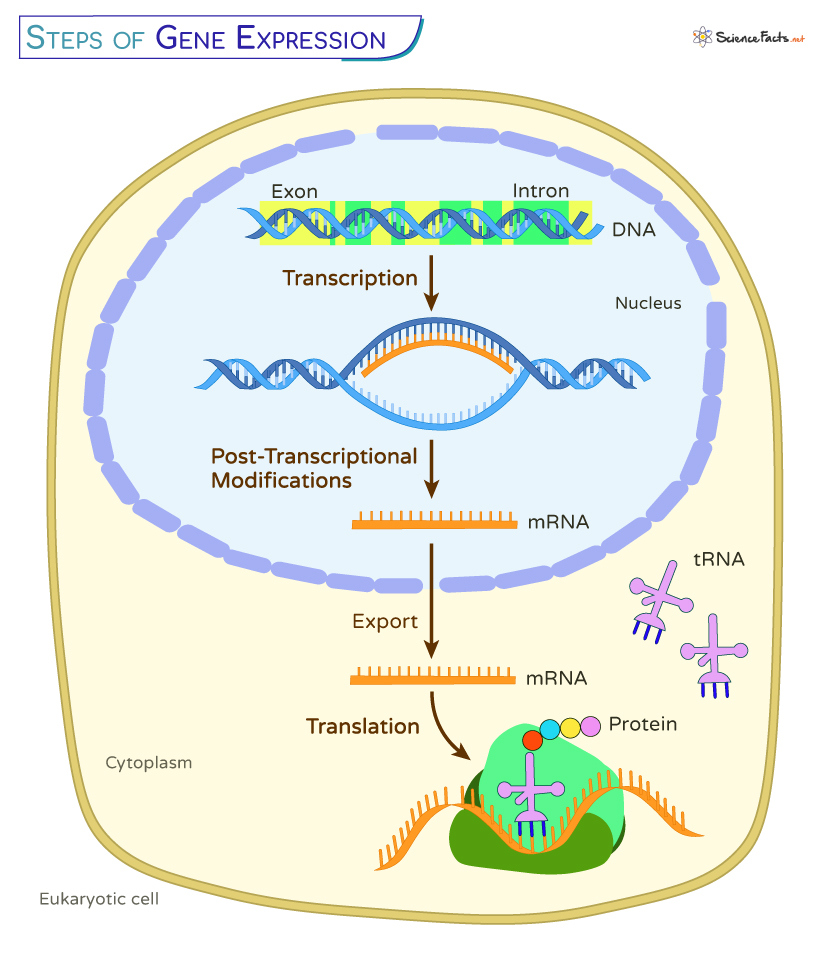Gene expression is the cell’s way of managing the amount and timing of the products created by our genes. This control is crucial because it allows cells to produce the necessary gene products exactly when needed, allowing cells to adapt to a changing environment, respond to signals, and handle damage and other triggers. An example is the control of insulin gene expression that provides regulation of blood glucose.
How Genes are Expressed
1. Transcription
2. Post-transcriptional Modification (mRNA Processing)
3. Translation
Regulation of Gene Expression
In prokaryotes, transcription occurs in the cytosol, while eukaryotic transcription occurs in the nucleus, where DNA is stored. In eukaryotes, the resulting RNA molecule, the RNA transcript, carries the information from the nucleus to the cytoplasm. Transcription involves several key stages: The final product, now mature mRNA, is ready for translation in the cytoplasm. As the ribosome moves along the mRNA, amino acids are joined together, forming a polypeptide chain, eventually folding into a functional protein. In prokaryotes, like transcription, translation also occurs in the cytoplasm. Translation involves several key stages: Regulations are made at the level of transcription, post-transcription, translation, and post-translation stages involving the following regulators and processes:
Transcriptional Regulation
Post-transcriptional Regulation
Translational Regulation
Post-translational Modification
